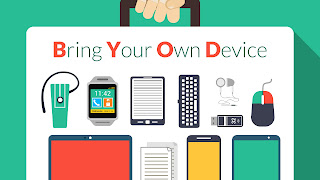Twitter Feed
The Endpoint Imperative: Global Security Compliance. Are you ready?
China has its Cybersecurity Law. Next May, the General Data Protection Regulation – or GDPR –goes into effect for the European Union. Research shows most organizations just aren’t…
The Endpoint Imperative: IT Spending: Setting Priorities in a Volatile World
Fast-evolving trends are changing the way IT thinks about security. To stay secure and productive, IT operations must excel at the fundamentals: PC refreshes for security, and optimizing end-user…
Top 1000 Tech Bloggers
The Rise “Top 1000 Tech Bloggers” leaderboard recognizes the most inspiring Tech journalists and bloggers active on social media. They use Klout scores (50%) and the blogger’s twitter conversations on…
IBM – The Power of Cloud Brokerage
Hybrid cloud adoption is now mainstream and you are making decisions every day about how to transform application and infrastructure architectures, service delivery, DevOps, production operations and governance. With Cloud…
More SMB Love Needed
In a recent post, titled “10 Surprising Facts About Cloud Computing and What It Really Is”, Zac Johnson highlighted some interesting facts about cloud computing in the SMB…
ATMs Are IT Too!
That world of homogenous IT technology managed entirely by the internal IT organization has long disappeared. Operations today require efficient and global management of technologically heterogeneous environments. The challenges and…
Digital Transformation Asset Management
Today’s businesses run in the virtual world. From virtual machines to chatbots to Bitcoin, physical has become last century’s modus operandi. Dealing with this type of change in business even…
The Game of Clouds 2017
The AWS Marketplace is growing at breakneck speed, with 40% more listings than last year! This and more insights were revealed when CloudEndure used their custom tool to quickly scan the…
Managing Your Hybrid Cloud
Photo credit: Shutterstock Runaway cloud computing cost may be causing an information technology industry crisis. Expanding requirements, extended transition schedules and misleading marketplace hype have made “Transformation” a dirty word. …
American Airlines Adopts Public Cloud Computing
Did you know that the reservations systems of the biggest carriers mostly run on a specialized IBM operating system known as Transaction Processing Facility (TPF). Designed by IBM in the…
- Increased employee mobility (63%), satisfaction (56%) and productivity (55%) dominate as the top drivers of BYOD. These employee related drivers are considered more important than reduced costs (47%).
- Security (39%) and employee privacy (12%) are the biggest inhibitors of BYOD adoption.
- 20% of surveyed organizations have suffered a mobile security breach, primarily driven by malware and malicious WiFi.
- Security threats to BYOD impose heavy burdens on organizations’ IT resources (35%) and help desk workloads (27%).
- Despite increasing mobile security threats, data breaches and new regulations, only 30% of organizations are increasing security budgets for BYOD in the next 12 months and 37% have no plans to change their security budgets.
- 72% – Data leakage/loss
- 56% – Unauthorized access to company data and systems
- 54% – Downloading of unsafe apps or content
- 52% – Malware
- 50% – Lost or stolen devices
- 49% – Vulnerability exploitation
- 48% – Lack of control on endpoint security
- 39% – Infrequent software updates
- 38% – Compliance
1. Create your policy before procuring technology: To effectively use mobile device management (MDM) technology for employee owned devices Policy must precede technology. Also note that these policies will have broad corporate-wide implications for IT, HR, legal, and security.
- Mobile device management
- Application security assessments
- Application testing services
- Application source code security assessments; and
- Embedded device security.
This post was brought to you by IBM Global Technology Services. For more content like this, visit ITBizAdvisor.com.
( Thank you. If you enjoyed this article, get free updates by email or RSS – © Copyright Kevin L. Jackson 2017)
Cloud Computing
- CPUcoin Expands CPU/GPU Power Sharing with Cudo Ventures Enterprise Network Partnership
- CPUcoin Expands CPU/GPU Power Sharing with Cudo Ventures Enterprise Network Partnership
- Route1 Announces Q2 2019 Financial Results
- CPUcoin Expands CPU/GPU Power Sharing with Cudo Ventures Enterprise Network Partnership
- ChannelAdvisor to Present at the D.A. Davidson 18th Annual Technology Conference
Cybersecurity
- Route1 Announces Q2 2019 Financial Results
- FIRST US BANCSHARES, INC. DECLARES CASH DIVIDEND
- Business Continuity Management Planning Solution Market is Expected to Grow ~ US$ 1.6 Bn by the end of 2029 - PMR
- Atos delivers Quantum-Learning-as-a-Service to Xofia to enable artificial intelligence solutions
- New Ares IoT Botnet discovered on Android OS based Set-Top Boxes


